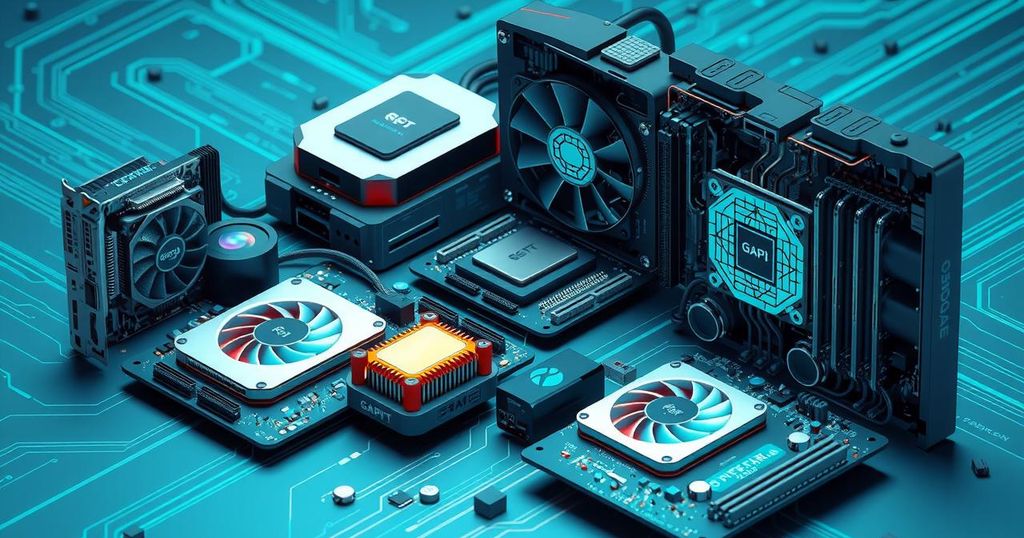Nvidia vs. Super Micro: Which AI Stock Deserves Your Investment?
Investors eyeing AI stocks should consider Nvidia and Super Micro Computer, but Nvidia stands out for its robust growth potential, significant market share, and impressive gross margins. With the AI market projected to soar beyond $4 trillion by 2032, Nvidia offers a more compelling investment despite a higher initial price on earnings.
Investors are swarmimg to the artificial intelligence (AI) sector, hunting for stocks that could significantly boost their portfolios. Many companies have already seen their valuations skyrocket—yet, experts say the biggest growth phases are still on the horizon. The projected value of the AI market, currently sitting at about $189 billion, is expected to catapult to over $4 trillion by 2032.
Among the players in this burgeoning market, Nvidia (ticker: NVDA) and Super Micro Computer Inc. (ticker: SMCI) stand out as potential leaders. Both companies are well-positioned to capitalize on the growing demand for AI, but they have diverging strategies on how to take advantage of this trend.
So let’s dive into Super Micro Computer first. This company specializes in selling tailor-made computer servers designed specifically for executing AI programs at faster rates and greater efficiency. Their systems are more like a comprehensive package, complete with necessary graphics processing units (GPUs) and adequate cooling systems, making it easy for businesses to deploy AI solutions without a hitch.
Nvidia, on the other hand, plays a different role in this AI ecosystem. They’re the chief supplier for Super Micro Computer, which means that NVIDIA chips make up most of the GPUs that Super Micro uses in their machines. Think of it this way: Super Micro serves customers needing servers, while Nvidia focuses on companies that need the underlying infrastructure to operate.
Given the explosive growth in AI infrastructure spending, it’s no surprise that both companies are seeing substantial growth—more than 50% sales growth is anticipated for each firm this year. But if you take a closer look at gross margins and price-to-earnings (P/E) ratios, that’s where Nvidia really shines. Nvidia’s gross margins dwarf those of Super Micro by more than six times, not to mention its P/E valuation being over double.
So, both companies have a stake in the booming AI sector, but Nvidia stands out as the preferable choice for investors right now. The nature of Super Micro’s business—essentially piecing together third-party components—introduces commoditization risks. Replicating what Nvidia does, however, is substantially trickier. Nvidia’s AI GPUs are a result of extensive investments and innovations over decades, while its CUDA developer suite remains a tough competitor hurdle even for heavyweights like Intel and AMD.
Currently, Nvidia commands a whopping 70% to 95% of the AI GPU market share, while Super Micro holds about 8% of the AI server market. This disparity confirms Nvidia’s robust competitive edge, which translates to impressive 75% gross margins and a much better pricing power compared to Super Micro.
Despite expecting revenue growth for Super Micro alongside increasing AI investments, it’s likely that their gross margins won’t improve much given their commoditized products. Nvidia, meanwhile, looks set to preserve its industry-leading margins well into the future. Even though Nvidia stock sits at 37 times trailing earnings, it’s worth noting that it’s trading at only 25 times forward earnings based on anticipated earnings over the coming year.
With those metrics in mind, Nvidia’s stock appears reasonably priced for a company that is not just dominant but is also tapping into one of the most significant growth opportunities in recent memory.
In summary, while both Nvidia and Super Micro Computer are positioned to benefit from the booming AI market, Nvidia clearly holds the upper hand. Its superior gross margins, competitive dominance, and pricing power make it a more attractive investment option. With the AI market set to explode in value over the coming years, Nvidia stands as a prime candidate for those looking to invest in a sector full of potential.
Original Source: www.fool.com




Post Comment